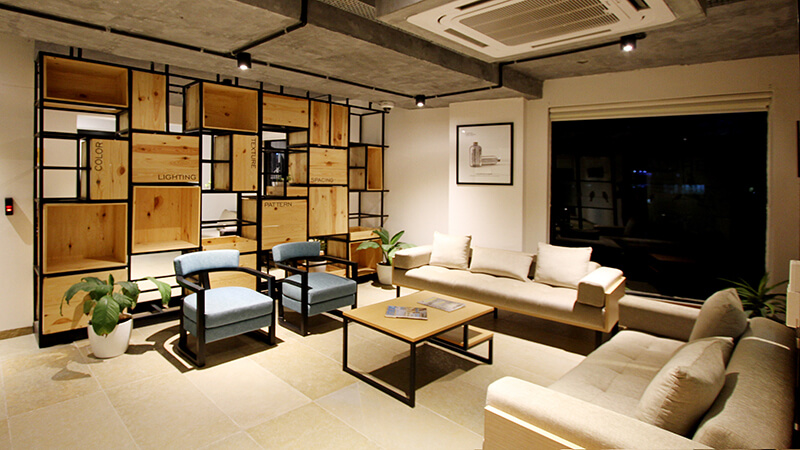How your medical office interior design affects your revenue and client experience
Just a few decades ago, doctor’s offices looked bland and colorless. The lack of interior design effort created an overall feeling of bleakness, not exactly comforting for patients going for checkups or any treatments. Luckily, the situation has improved as healthcare providers now include interior design as a way to differentiate themselves from the competition.
Medical offices are becoming more futuristic and spa-like, and it is exciting for everyone. From luxurious patient care rooms to stylish dental offices with the latest equipment and gadgets, medical offices are almost competing with each other in healthcare design.
These enhancements improve the customer’s experience and supports revenue generation. Let’s explore how interior design helps build trust and loyalty with your patients:
The significance of the medical office interior design
Interior design is a crucial ingredient for a medical clinic’s success. Fortunately, skilled architects and designers can make every space feel welcoming. So why should you pay so much attention to the interiors of your doctor’s office? Here are just a couple of reasons why interior design is fundamental:
More light, more vitamin D
A medical office ideally has natural sunlight, which is an instant mood booster and promotes the production of vitamin D. Besides letting in natural light, windows will also give your office a more open feel.
Reduces anxiety
Some patients shudder every time someone mentions a doctor or a medical office, and that is a perfectly normal reaction. Medical professionals should help patients feel calm and safe. That feeling should start from the moment they enter your medical office. Therefore, the first impression is everything. Natural color palette can significantly lower anxiety. Also, ensure a constant flow of fresh air in your medical office, which will help reduce stress and panic.
Increases morale
Optimism assists in faster recovery, so a patient‘s surrounding can play a significant role. Your surroundings shouldn’t look like a standard doctor’s office. Instead, interior design abundant with custom details, such as a comfortable seating area, lush greenery, and unique paintings, can make you stand out from the competition. A prime example is the pediatric hospital design which often has a homey feeling, with familiar cartoon characters on the walls. The staff will also encourage their young patients to add their own artwork.
Medical office design tips to improve client experience
Consider the client experience when designing the interiors of your medical office. A few well-executed tricks and tips can put your business on the map. Here are our top suggestions:
Make the best of the space you have
You don’t need an enormous medical office to make it look relaxing or welcoming. Instead, learning how to improve the space you already have is the key. Smaller areas can evoke that cozy feeling if you dive deeper into space planning and learn how to decorate them.
For instance, include picture frames around TVs to add more quirkiness and individuality to the reception desk. Keep the signage tasteful but still visible. The storage areas should be easily accessible and not hidden as part of the décor. Remember that wayfinding (those sticker arrows on the floor) is not just for large hospitals; your doctor’s office could look super fresh with the addition of this flooring trend. These tiny adjustments will make a noticeable difference for both your patients and staff.
Create a beautiful lounge
Waiting for an appointment of any kind can create stress, so make sure your patients have a comfortable space to sit in and relax. It means that you have to rethink the concept of a waiting room. Talk to your interior designer and find the best furniture and ornamentation.
Throwing out chairs and bringing in ergonomic couches and cushions is a great start. Imagine what you want to see in a waiting area. Perhaps a fridge with refreshments and spring water can make the healthcare facilities more pleasant. Details will set the mood, and adding more nature can help out. There are plenty of green indoor plants to choose from, and some are incredibly easy to care for.
Technology and healthcare
Technology is a must in every modern medical office. It can make healthcare facilities run faster and more efficiently. Plus, using the latest tablets is another way to reduce the piles of papers and documents that clutter your workspace.
Besides improving operational efficiency, implementing the newest technology will signal to your patients that you are willing to invest in your medical practice, which contributes to their decision of coming back in the future.
Be informed about the design trends
If you want to follow the latest design trends, it might be worth consulting an experienced interior designer. They can point you in the right direction regarding color schemes, decor, furniture configuration, as well as general tips on how to remodel your medical practice. Mood boards can come in handy when you want to visualize your design ideas, so consider creating one.
Separate areas of your medical facilities need different design features. So start with the reception area, and move to the office space and exam rooms. Restrooms are sometimes overlooked but are equally important. Patients will appreciate proper lighting and fresh air!
